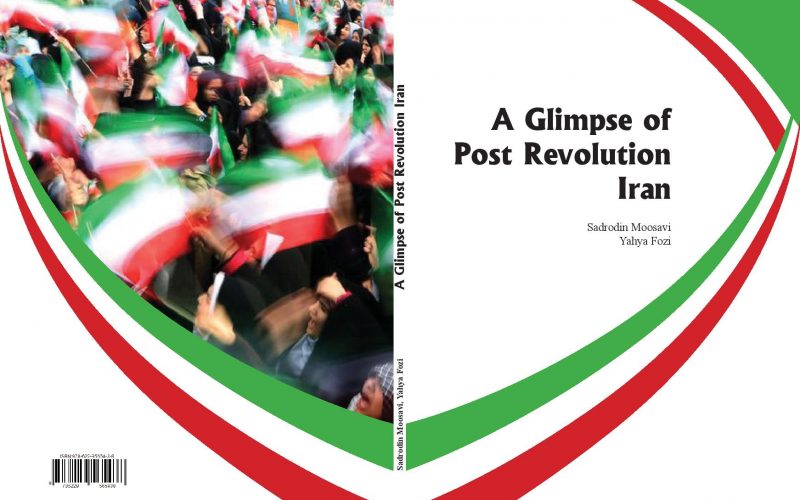Iran’s 1979 revolution was one of the greatest revolutions of the 20th century and has left crucial impacts on the domestic, regional and international arenas. An undersetting of the experience of this revolution through an impartial analysis of its developments, can, on the one hand, improve the insight of the elites about the revolution, and, on the other hand, can provide an understanding of the challenges facing this revolution that has tried to promote a type of religious modernism and a new ethical order through creating a balance between tradition and modernity.
Since its inception, the Iranian revolution, because of its religious nature, faced such issues as the relationship between religion and democracy, religion and science, religious state and secularism, women’s social role, sociopolitical freedoms, violence and nonviolence, rights of dissidents, indigenous development model, etc. Some of these issues are discussed in the present book and some others will be discussed in other books to be published in the near future.
The first chapter of this book deals with the experience of religious democracy in Iran. The trend of stabilization of religious democracy as well as some of its challenges have been discussed in this chapter. Basically, the main objective of the Islamic Revolution was to overthrow the monarchical system and establish a new political system based on religious democracy. The Constitution that was approved by majority of the people after the victory of the revolution declared the new system as an Islamic Republic. The new system stipulates a republic based on Islamic teachings. In fact, the revolutionary figures who led the revolution to victory maintained that democracy is a vehicle for the effectiveness of the political system which in different societies takes different shapes such as liberal democracy, social democracy, etc. Hence they concluded that we can speak of Islamic democracy as well. Therefore, the first chapter deals with the experience of establishment of religious democracy in Iran.
The second chapter focuses on the relationship between science and religion in Iranian revolution. Since the post-revolution sociopolitical system claimed to be religious, the Iranian scholars and officials offered various approaches to the interaction of religion and science in general and the nature of humanities in particular. Some researchers argued that science is value free or neutral, while others, criticizing the existing humanities, called for their replacement with religious sciences. The third group supported an interactive relationship between science and religion. They maintained that religion is capable of affecting the approach, questions and hypotheses of a researcher, but scientific method enjoys independence. Hence, they laid emphasis on the necessity of directing the approach of the researchers and acquainting them with religious teachings to influence their researches towards giving an orientation to indigenous sciences aiming at solving the problems specific to the Iranian and religious society.
The third chapter focuses on the culture of the Islamic Revolution and its different aspects. Basically, the Iranian Revolution was a cultural revolution in which course culture played a crucial role in mobilization of the masses. Therefore, in the aftermath of the revolution, cultural issues, particularly the way of encounter between religious culture and secular culture, were brought to the limelight. These issues are discussed in the third chapter.
The fourth chapter discusses the status of women in post-Revolution Iran and the approaches of the ideologists of the revolution to the sociopolitical role of women in the society. Hence, women’s participation in cultural, political and scientific arenas as well as challenges and opportunities the Iranian women face in the post-revolution era are discussed in this chapter.
The fifth chapter has been allocated to the interaction between the revolution and technology, with special attention to e-government in Iran. Hence the challenges as well as the opportunities of e-government are also discussed.
The seventh chapter discusses the US confrontation with the Islamic Revolution of Iran and Washington’s media inroad against Tehran. The focus of this chapter is on the representation of US hostile policies towards Iran in the anti-Iran films produced by the Hollywood. Also the US media endeavors to distort the image of Iran have been discussed in this chapter.
Attempts have been made in this book to acquaint the readers with the Iranian revolution and its experience
| Page No. | ||
| 4 | Introduction | 1 |
| 8 | Democracy and Religion: Iran’s Islamic Republic Experience
|
2 |
| 19 | Religion and Humanities in Post-Revolution Iran:
Discourses and Strategies
|
3 |
| 39 | The Culture of the Islamic Revolution
|
4 |
| 69 | Women in Iran: Women’s Sociopolitical Status in Islamic Revolution’s Discourse | 5 |
| 85 | Democracy and Electronic Government in Iran:
Political Advantages and Disadvantages
|
6 |
| 101 | Media and Foreign Policy:
A Case Study of American Visual Products about Iran
|
7 |
.

